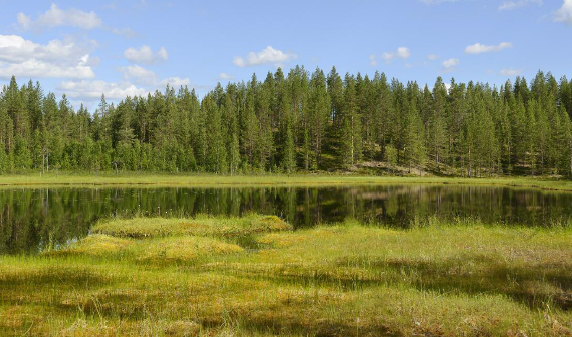Dr Taina Pennanen and Dr Hannu Fritze from Natural Resources Institute Finland share their thoughts on microbial diversity and biomass issues in the north in terms of combatting climate change in the North of our planet
The Finnish land area is 73% covered by forests with the rest consisting of open peatlands, arctic tundra, agricultural fields and built-up areas. One speciality characterising the Finnish land area is the high proportion of organic peatland soils which make up around 35% of the country’s total land area. Half of these peatlands have been drained mainly for forestry reasons, but also for agricultural production. Approximately half of these drained peatlands have not succeeded in establishing a productive forest stand. Organic soils manifest the highest carbon (C) storage reservoir of all landforms, and soil C storages are sensitive to land use.
Microbes are involved in all the three major greenhouse gas (GHG) production processes, namely carbon dioxide, di-nitrous oxide and methane (CO2, N2O, CH4). All these gaseous products are the outcome of the important ecosystem service provided by soil microbes, namely the decomposition of dead organic matter of plant and animal origin. All ecosystems produce GHGs and the groundwater level is crucial in influencing the production proportion of CO2 in relation to N2O and/or CH4. Thus, the draining of organic soils lowers the water table level drastically, enabling aerobic decomposition processes and, thereafter, much of the stored organic C is lost as CO2, inducing global warming.
Restoration of unproductive drained organic soils by raising the ecosystem water table level changes the soil microbial flora towards the native state, has a strong impact on diminishing gaseous C loss and the return of these peatland ecosystems as a C reservoir. The natural emissions from an ecosystem of the three GHGs is not a threat to our planet. Furthermore, it can be argued that peatland GHG emissions have made it possible to achieve a liveable temperature in the North of our planet.
Finnish agricultural fields lose C. Globally, half of the original soil C is lost in the last 50 years of agriculture, accompanied by losses in crop production and a simultaneous
reduction in soil microbial biodiversity, leading also to a reduced soil microbial biomass. According to the latest scientific understanding, this is crucial since the C sequestration capacity of the soil is directly linked to the amount and diversity of the soil microbes. This
is due to those microbes that convert plant and animal originated C into microbial C, which is the slow decomposable part of the soil C reservoir.
This is easy to understand if one thinks that the first living organisms on this planet were microbes and the organic matter important to our forestry and agriculture- based wellbeing had to be made up from the remains of the organisms that are present. In Finland, a large part of the agricultural areas were previous forest soils, and these could be covered with forestry based side chain products to raise the microbial diversity and to improve fungal presence, to help meet the 4per mille target demanded by France in 2015.
Microbial involvement in ecosystem services is not limited to decomposition processes because microbes are also key players in plant growth and performance. 85% of the plant species on the Earth are dependent on symbiosis with their microbial partners and, especially, the fungal association with boreal trees and other plants of this ecosystem are essential for Finnish forests. This ensures water and nutrient allocation from soil to the forest plants in exchange of photosynthetic C establishing the soil microbial wellbeing, the turnover of the microbial biomass C into stable soil C, and the reproduction of new tree generations. Thus, plant-microbe connections are not confined only to soil C, because they also allow forest trees to stock up atmospheric C into the stable form of timber. Therefore,
only the wise use of these resources determines if C is sequestered into the ecosystem due to the microbial performance to mitigate climate change.
The take-home message is that soil microbes indeed influence global climate and to restore hampered ecosystems with the services provided by the soil microbes, one has to know how the natural ecosystem functions.
Dr Taina Pennanen
Principal Research Scientist
Dr Hannu Fritze
Research Professor
Natural Resources Institute Finland
Tel: +358 29 532 6000
www.luke.fi/en
www.twitter.com/LukeFinlandInt











